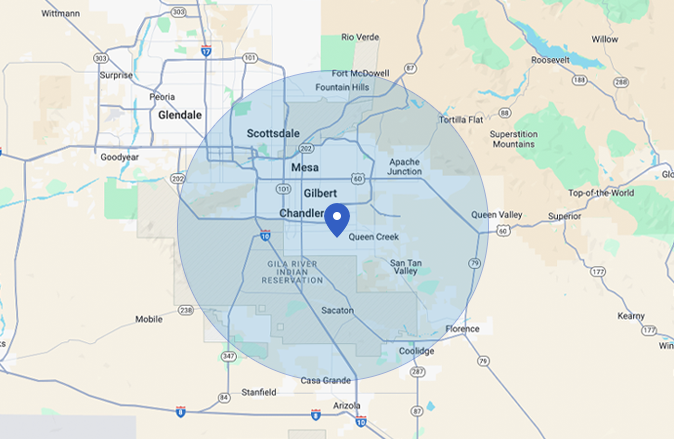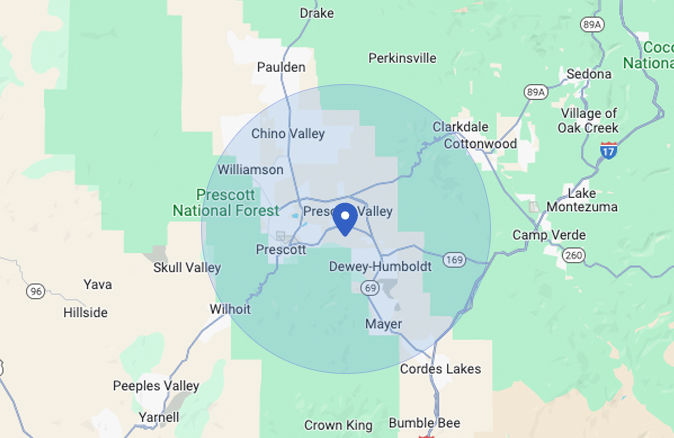
Top Thermostat Facts You Didn't Know About Your Home in Arizona
Thermostat facts can help you better understand how your HVAC system works, and why your comfort issues might not be about the unit itself. Every home with an HVAC system also has a thermostat or two. If you live in a two-story home, you’ll likely have two thermostats, one for the upstairs and one for the downstairs.
Many times, when homeowners experience issues with heating or cooling, they assume the HVAC unit is to blame. But you might be surprised to learn that it’s sometimes the thermostat instead. It’s easy to confuse thermostat problems for HVAC problems because either way, your system won’t perform as expected.
Thankfully, some simple troubleshooting can go a long way toward figuring out what’s wrong. Read on to learn how thermostats work, how to fix common problems, and what you can do to keep your HVAC system running smoothly all year long.
Learn more: Which Smart Thermostat Is Best for Your Home?
How a Thermostat Works
Thermostat facts start with understanding the basics: this small device is what allows homeowners and business owners to control indoor temperatures with precision and ease. Originally integrated into air conditioning units, thermostats are now wired directly into HVAC systems to deliver more accurate and responsive climate control.
The thermostat monitors indoor temperature and signals your HVAC unit to turn on or off depending on the settings you've chosen. When the air drifts from your preferred temperature, the thermostat activates the system. Once the ideal temperature is reached, it signals the unit to shut off.
Thermostat technology has evolved over the years. Today, homeowners can choose from digital and smart thermostats, both offering greater convenience and energy efficiency. Smart models go a step further, allowing you to program temperature settings by time of day, control your home climate remotely, and manage different zones throughout the house. This not only increases comfort but can also help reduce energy costs.
Learn more: Replace That Old Thermostat With A Digital One This Holiday
Fixing a Thermostat

There are a number of reasons why thermostats can break, stop working, or otherwise frustrate you when you’re trying to cool or heat your home. Here are a few examples:
- No Battery: Many thermostats are powered by both wiring and a battery. If your unit is battery powered, then it could just be that the battery finally gave out. This is the first area to troubleshoot. Replace the battery with a new one and see if your unit turns on and starts functioning again.
- No Power: If your unit is powered through wiring plugged into your home, ensure that your home’s wiring is working properly. Check the breaker and ensure that power is, indeed, flowing to the thermostat.
- Faulty Wiring: If a wire becomes disconnected or something chews through it, your thermostat will not function the way it should.
- Bumped Off: Sometimes the ‘on’ switch gets bumped to off. Check this, as well.
Knowing these thermostat facts can help you troubleshoot quickly and determine whether it’s a simple fix or time to call a professional.
HVAC Maintenance Tips
By regularly maintaining your HVAC unit, you can be sure that your unit isn’t the problem. Have HVAC technicians come out twice a year to inspect it and perform general maintenance. Then, throughout the year, spot check your unit.
Ensure that there aren’t any unusual noises, like grinding, that might suggest an issue with the fan belt. Check to make sure your unit is free of rust and corrosion. Finally, ensure that the drainage pipe is working properly and not backing up into the unit.
Keep up with your heater or AC unit's maintenance, and you'll undeniably see benefits like better home comfort and fewer thermostat problems!
Learn more: Go Green at Home With New Thermostat!
Trusted HVAC Pros Backed by Thermostat Facts and Experience
When it comes to thermostat facts and full HVAC system expertise, you can count on Wolfgang’s Cooling and Heating. Since 1982, we’ve been providing exceptional heating and cooling services throughout Arizona. Every customer can expect trustworthy, honest technicians, on-time arrival, and no mess left behind, that’s our promise on every service. Visit our AZ HVAC blog for the latest news and trends.









